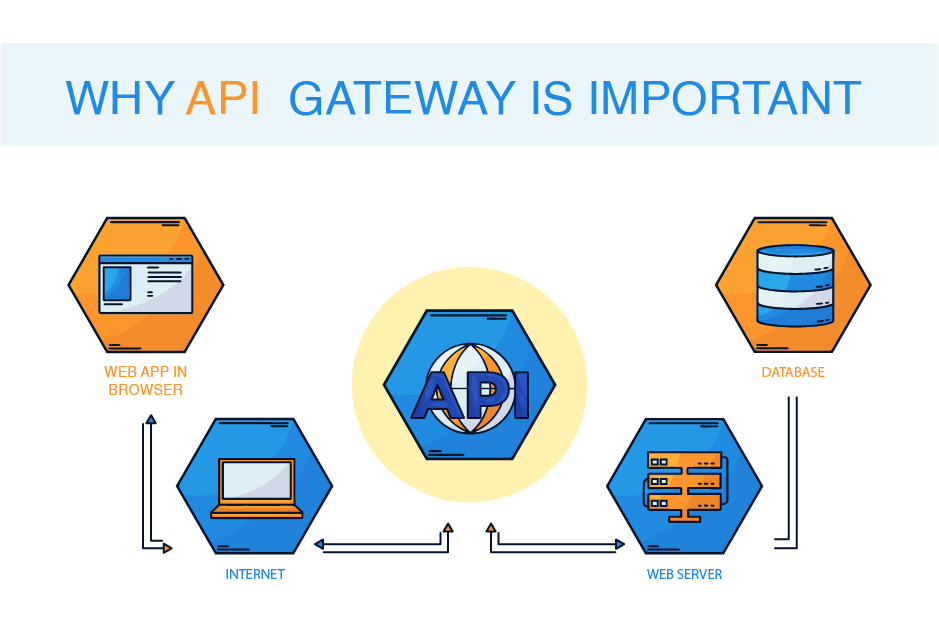Indeed, microservices have taken the software industry by storm and for a good reason.
Microservices allow you to deploy your application more frequently, independently, and reliably. However, reliability concerns arise because the microservices architecture relies on a network. Dealing with the growing number of services and interactions becomes increasingly tricky. You must also keep tabs on how well the system is functioning. To ensure service-to-service communication is efficient and dependable, each service must have standard features.
Moreover, System services communicate via the service mesh, a technology pattern. Therefore, it is possible to add networking features such as encryption and load balancing by routing all inter-service communication through proxies when a service mesh is deployed.
To begin, what exactly is a “service mesh?
A microservices architecture relies on a specialized infrastructure layer called “service mesh” to manage communication between the many services. It distributes load, encrypts data, and searches for more service providers on the network. Using sidecar proxies, a service mesh separates communication functionality onto a parallel infrastructure layer rather than directly into microservices. A service mesh’s data plane comprises sidecar proxies, facilitating data interchange across services. There are two main parts to a service mesh:
Plane of Control
The control plane is responsible for keeping track of the system’s state and coordinating its many components. In addition, it serves as a central repository for service locations and traffic policies. Tens of thousands of service instances must be handled, and the data plane must be updated in real-time effectively.
Data Plane
In a distributed system, the data plane is in charge of moving information between various services. As a result, it must be high-performance and integrated into the plane.
Why do we need Service Mesh?
As the name suggests, an application is divided into several independent services that communicate with one another across a local area network (LAN). Each microservice is in charge of a particular part of the business logic. For example, an online commerce system might comprise services for stock control, shopping cart management, and payment processing.
Compared to a monolithic approach, the use of microservices has various advantages. Each service is built and delivered individually, allowing teams to take advantage of agile processes and release changes more often. In addition, individual services can be scaled independently, and if one service fails, it doesn’t affect the rest of the system.
A microservice-based system’s communication between services can be better managed with the help of the service mesh. However, it’s possible that creating network logic in each service is a waste of time because the benefits are built-in in separate languages. Moreover, even though several microservices utilize the same code, there is a risk of inconsistency because each team must prioritize and make updates alongside improvements to the fundamental functionality of the microservice.
Microservices allow for parallel development of several services and deployment of those services, whereas service meshes enable teams to focus on delivering business logic and not worry about networking. In a microservice-based system, network communication between services is established and controlled consistently via a service mesh.
When it comes to system-wide communications, a service mesh does nothing. This is not the same as an API gateway, which separates the underlying system from the API clients can access (other systems within the organization or external clients). API gateway and service mesh vary in that API gateway communicate in a north-south direction, whereas service mesh communicates in an east-west direction, but this isn’t entirely accurate. There are a variety of additional architectural styles (monolithic, mini-services, serverless) in which the need for numerous services communicating across a network can be met with the service mesh pattern.
How does service mesh work?
A service mesh doesn’t impact an app’s runtime environment because programmes in whatever architecture have always needed rules to govern how requests are routed. For example, the logic that governs the communication between separate services is abstracted away from each service, making a service mesh unique. An array of network proxies called a service mesh is incorporated within the programme. If you’re reading this on a work computer, you’ve probably already used a proxy — which is common in enterprise IT.
- Your company’s web proxy first got your request for this page when it went out.
- Once it passed the proxy’s security measures, it was transferred to a server that hosts this page.
- It was then tested against the proxy’s security measures once more…
- Finally, the proxy relayed the message to you.
Each microservice must be programmed with logic to manage service-to-service communication without a service mesh, which means developers are less focused on business objectives. In addition, because the mechanism governing interservice transmission is concealed within each service, diagnosing communication issues is more complicated.
Benefits and drawbacks of using a service mesh
Service meshes can be used to automate the deployment of applications and infrastructures, simplify code management, and, as a result, enhance network and security policies in organizations with established CI/CD pipelines.
The following are some of the benefits of a service mesh:
- Improves interoperability between services in microservices and containers.
- Because communication issues would occur on their infrastructure layer, it would be easier to diagnose them.
- Encryption, authentication, and authorization are all supported.
- Faster application creation, testing and deployment.
- Managing network services by sidecars next to a container cluster is effective.
The following are some of the drawbacks of service mesh:
- First, a service mesh increases the number of runtime instances.
- The sidecar proxy is required for every service call, adding an extra step.
- Service meshes do not address integration with other services and systems and routing type or transformation mapping.
- There is a reduction in network management complexity through abstraction and centralization, but this does not eliminate the need for service mesh integration and administration.
How to solve the end-to-end observability issues of service mesh
If you want to keep your DevOps staff from being overworked, you need a simple method to deploy and understand in a dynamic microservices environment. Artificial intelligence (AI) may provide you with a new level of visibility and understanding of your microservices, their interrelations, the service mesh, and the underpinning infrastructure, allowing you to identify problems quickly and pinpoint their fundamental causes.
For example, Davis AI can automatically analyze data from your service mesh and microservices in real-time by installing OneAgent, which understands billions of relationships and dependencies to discover the core cause of blockages and offer your DevOps team a clear route to remediation. In addition, using a service mesh to manage communication between services in a microservice-based application allows you to concentrate on delivering business value. At the same time, network concerns, such as security, load balancing, and logging, are handled consistently across the entire system.
Using the service mesh pattern, communication between services can be better managed. In addition, because of the rise of cloud-native deployments, we expect to see more businesses benefiting from microservice designs. As these applications develop in size and complexity, inter-service communication can be separated from business logic, making system expansion easy.
To sum up
It is becoming increasingly important to use service mesh technology because of the increasing use of microservices and cloud-native applications. Service mesh deployments are the responsibility of the operations team, but the properties of the service mesh must be configured in conjunction with the development team.










